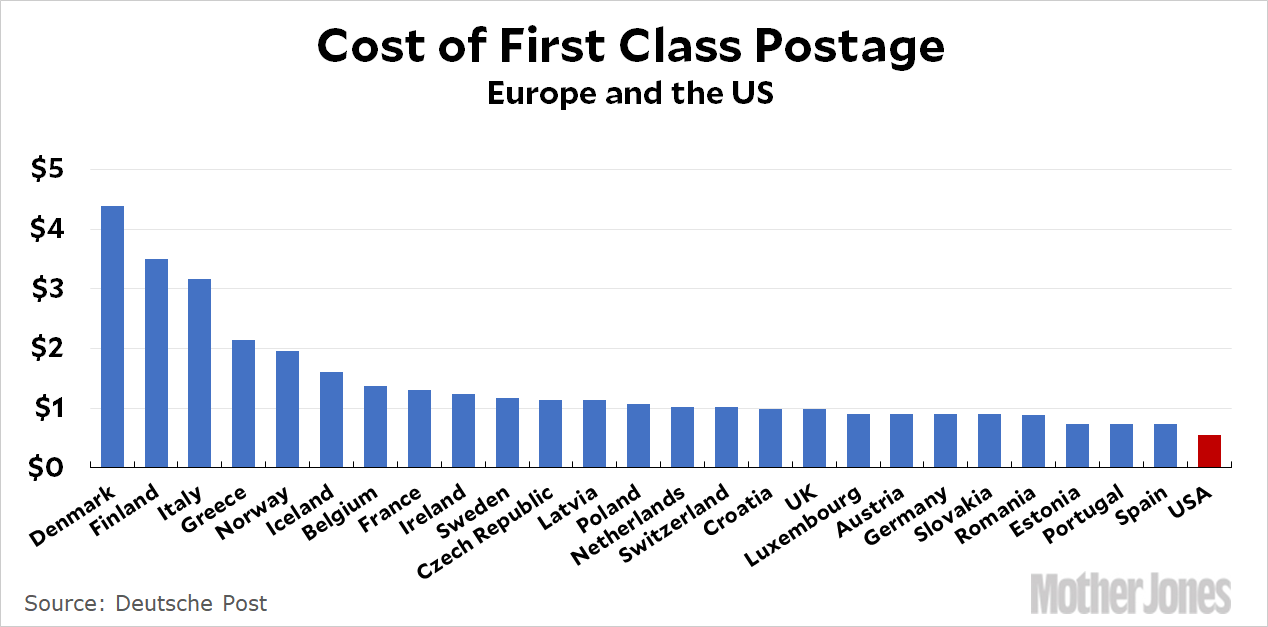Unlike many of my fellow liberals, I don’t consider the post office to be the very sinew upon which our nation rests. On the other hand, it is important and it’s worth running properly.
Now, there are plenty of reasonable disagreements about how the post office should be run, but there’s one issue that seems almost indisputable to me: it should be able to set postage rates that allow it to break even. Unfortunately, federal law allows the price of first class stamps to rise only at the rate of inflation, and that’s plainly not enough in an era of email, Instagram, and falling volumes of first class mail. The German post office surveys European postage rates every few years, and here’s how we compare:

I think we can all agree that four bucks to send a letter in Denmark seems fairly outlandish, but we can also agree that the current US rate of 55 cents is pretty obviously an outlier too. We have economies of scale, to be sure, but we also have a far bigger landmass to cover than any European country.
This is the fundamental problem with the Postal Service. Congress wants to look good, so they pass a law keeping postage rates down. Then, when the Postal Service runs deficit after deficit, they swoop in and insist that it’s because they’re run inefficiently. After all, it couldn’t possibly be Congress’s fault, could it?
It could be and it is. The Postal Regulatory Commission has been trying to get the inflation rule changed for some time, but so far they’ve had no luck. Apparently no one in Congress wants to be known as the person who voted to increase the price of a stamp.
When it comes to packages, the Postal Service has competition and therefore sets rates that allow it to compete. That keeps package rates reasonable. However, there’s no similar competitive pressure on letters since the Postal Service has a monopoly on first class mail. This means there really does need to be some kind of oversight on first class postage rates in order to prevent us from turning into Denmark. The problem is that a simpleminded inflation rule is about the worst possible oversight you can imagine. It needs to change, and if it does, guess what? Suddenly the USPS would be in perfectly good shape even if first class postage remained lower than practically any country in Europe. If we really value the Postal Service, this would be the single best way to show it.

















